There are so many assistive technology (AT) devices available to help compensate for lost or diminished abilities due to brain injury, it is hard to know where to start. Today I thought we would address the area of memory loss and talk about just 10 items to get you started on your quest. Remember this list is not exhaustive! In addition, a consultation with an assistive technology specialist is recommended to help match abilities/needs to the available AT devices. For more information, please contact IPAT or your state’s AT program for an assistive technology specialist near you.
1. Wearable Timers $10-$15
A simple wearable timer such as the Polder manual timer or the digital Kitchen Clip Timer can eliminate “setting and forgetting” such as the stove or running a bath. To clarify things even further for those who can still write, indicate why the timer was set on the back of the timer with a post-it note or dry erase marker.
2. WatchMinder 3 $69
The WatchMinder 3 provides up to 30 vibrating reminder alarms with a text message that can be personalized to fit the task. For example at 1pm an alarm may go off that says “take med”, at 2pm it says “dentist”, 3pm “journal”, at 5pm it says “call home”. It is now waterproof and allows for repeat snooze alarms. The company also just put out a new app (iOS $1.99).
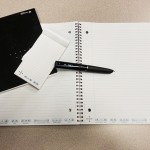
3. Livescribe Echo SmartPen $120
A SmartPen syncs audio recordings with any markings on special Dot Paper. It allows one to go back and touch those images or words on the paper and playback what was said when they were created, right on the pen itself. The ability to read and write is not required; any kind of mark or drawing on the page will do.
A person who has difficulty remembering and writing down verbal directions, to do lists, and shopping lists may benefit from this or similar technologies. This pen can even be used to create a talking calendar.
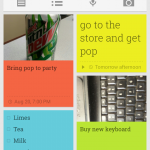
4 & 5. Schedule/To-do list Apps
There are many smart phone apps available to help remember when and where you have to be and what you have to do. Many are low or no cost.
- Any.do offers a full featured to do list, which I talked about last year and recently released a companion calendar app. Look for a new mail and memo app to come soon. These are free and work on iOS, Android and Chrome.
- Google Keep is a very simple free app that allows for quick capture of typed, photo and voice reminders. You can set alarms for “Morning”, Noon” or Night” or a specific time. It also provides a simple to do list and comes with a widget that you can keep on your home page of your phone. It syncs with your google account and can be accessed on your computer as well.
6. PEAT
PEAT, as Trish describes in her blog post, is an android app that provides cueing, scheduling, to-do lists and task analysis. It allows you to integrate audio recordings, photos, and text to design a system that is tailored to the individual’s needs. For example, put in a reminder to brush teeth and integrate a step-by-step procedure with pictures on how to complete that tooth brushing task.
It is different than other apps in that it monitors performance and adjusts the schedule if needed. Check out this news story to learn more about the app and exciting future developments.
7. Photo Dialing Apps
There are several apps available for both Android and iOS that help you create a set of one touch pictures to dial individuals directly. Here are two of them.
- OneTouchDial ($1.99 for iOS)
- Snap Dial ($.99 Android)

8. Journaling Apps
Keeping a paper memory diary, a popular aid for people with brain injuries, can get kind of bulky. One solution is to keep a journal on a smartphone or tablet instead, which also reduces the number of items to remember each day.
There are many journaling apps available that can help you. One example is the free S-Note app that is native to the Samsung Galaxy Note smartphones and tablets. S-Note allows one to integrate photos, web clippings, audio recordings, video, text, and even handwriting with the built-in stylus. Save the entries by name, and they will be searchable. Worried about losing the S-Pen? There is a slot in the device for storage and an alarm that will warn you if the phone separates from the pen.
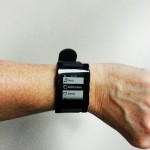
9. Smart Watches (price varies)
“I need a smartphone to remember my life, but I cannot remember to bring my smartphone!” If this applies to you, a smart watch might help. Although these watches are expensive and may seem gimmicky, they could be the one device that helps you remember all of the rest. There are many smart watches on the market and each vary in features. The following features could be very helpful with memory loss:
- Notifications if your smartphone gets out of range;
- Phone Finder and Watch Finder;
- Notifications for calls, texts, and alarms;
- Water resistant, so you don’t have to take it off as much (if necessary); and
- Long battery life.
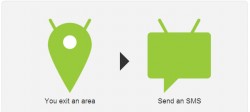
10. IFTTT
Make a “memory recipe” with the IFTTT (If This Then That) app as Trish talks about in her blog. This free iOS/Android app allows one to create an automatic reaction for many of the triggers in our lives reducing the memory load and time. For example, if you leave a certain area such as your work environment, you can set up an IFTTT “recipe” to send a text message, notifying your loved one. You can also set up another “recipe” to unmute your phone when work is done, so you can hear it ring once you arrive home-which I always forget to do!

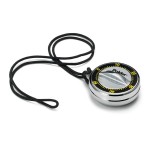
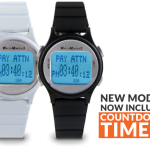


Very cool and very helpful,
I am searching for some type of phone for my son who was injured in an auto/18 wheeler accident in September of 2012. He is now a quad but can move his head from side to side. He does have some loss of memory and ability to articulate. If you can help me in any way, it would be most appreciated. He is in a nursing facility at the present time and is 48 years old.
Hi Shirley-please contact me and we can discuss your son’s needs. 1-800-895-4728 or jmkrull@ndipat.org. I would be happy to help! Jeannie
Hello. I just ran across this post and it looks like PEAT is actually $1,495 according to the developer’s website (and it doesn’t appear to be available directly from the app store). I thought I would mention that in case anyone else was interested in it.